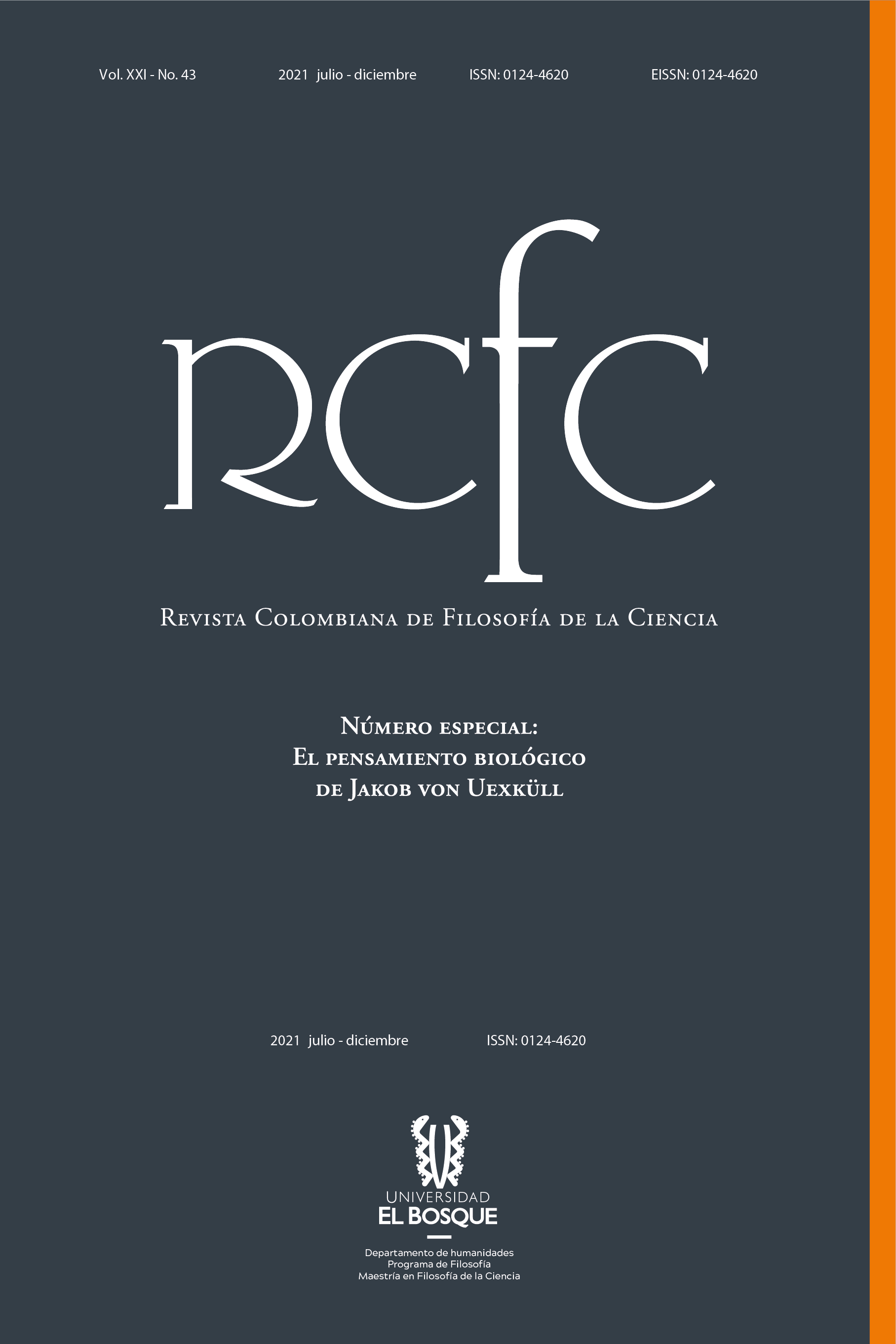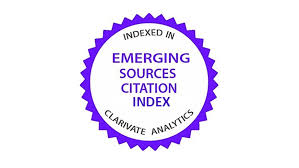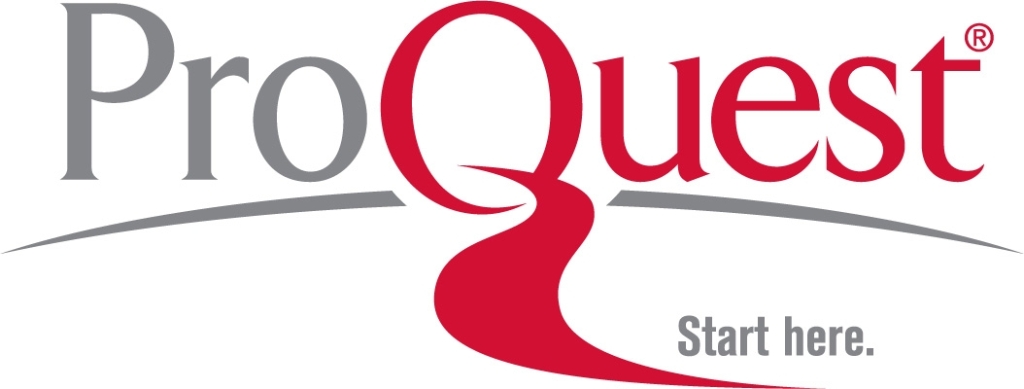Etología, cacería y escape
Una lectura de la automatización del comportamiento y el diseño de trampas a partir de la biología teórica de Jakob von Uexküll
DOI:
https://doi.org/10.18270/rcfc.v43i21.3460Palabras clave:
etología, comportamiento, cacería, automatización, Jakob von UexküllResumen
A partir de la biología teórica de Jakob Von Uexküll, el artículo expone cómo una protoetología constituye la condición de posibilidad del diseño de trampas y de todas las prácticas de cacería; en qué sentido la liberación del comportamiento garantizan la fidelidad de la investigación etológica aplicada a los hábitos de consumo; que el concepto de cibernética exhibe una lógica semiorgánica que permite aproximarse a ciertos objetos digitales como si fueran agentes más que herramientas; y la idea de una etología de la máquina como modo de acceso al comportamiento de los algoritmos.
Descargas
Referencias bibliográficas
Despret, Vinciane. ¿Qué dirían los animales si les hiciéramos las preguntas correctas? Buenos Aires: Cactus, 2018.
Ellenberg, Jordan. “This Psychologist Might Outsmart the Math Brains Competing for the Netflix Prize”. Wired Online (2 de marzo de 2008). <https://www.wired.com/2008/02/mf-netflix/>
Finkelstein, David. “Sensations, Animals and Knowledge”. Expression and the Inner. Cambridge: Harvard University Press, 2008.
Fisher, Mark. Realismo capitalista. ¿No hay alternativa? Buenos Aires: Caja Negra, 2017.
Hallinan, Blake y Striphas, Ted. “Recommended for you: The Netflix Prize and the Production of Algorithmic Culture”. New Media & Society 18.1 (2016): 117–137. <https://journals.sagepub.com/doi/full/10.1177/1461444814538646>
Heidegger, Martin. Los conceptos fundamentales de la metafísica. Mundo, finitud y soledad. Madrid: Alianza Editorial, 2007.
Hui, Yui. “What is a Digital Object?” Metaphilosophy 43.4 (2012). Oxford: Blackwell.
_______. “Machine and Ecology”. Angelaki, 25.4 (2020): 54-66. <10.1080/0969725X.2020.1790835>
Husserl, Edmund. Meditaciones cartesianas. Madrid: Tecnos, 2009.
Kant, Immanuel. Crítica del discernimiento (o de la facultad de juzgar). Madrid: Alianza Editorial, 2012.
Leibniz, Gottfried. Wilhelm. “Monadología”. Obras filosóficas y científicas II. Granada: Comares, 2010.
Nagel, Thomas. “What Is It Like to Be a Bat?”. The Philosophical Review 83.4 (1974): 435-450. <http://www.jstor.org/stable/2183914>
Platón. Las leyes. Madrid: Centro de Estudios Constitucionales, 1983.
Rachlin, Howard. “What Müller's Law of Specific Nerve Energies Says about the Mind”. Behavior and Philosophy 33 (2005): 41-54. < <https://www.jstor.org/stable/27759507>
Rahwan, Iyad., et ál. “Machine Behaviour”. Nature 568.1 (2019): 477-486. <https://doi.org/10.1038/s41586-019-1138-y>
Reynolds, Simon. Retromania: Pop Culture's Addiction to its Own Past. London: Faber and Faber, 2012.
Rose, Lacey. “Netflix’s Ted Sarandos reveals his Phase 2 for Hollywood”. The Hollywood Reporter (2013): Online. <http://www.hollywoodreporter.com/news/netflixs-ted-sarandos-reveals-his-526323>
Sadin, Éric. “La inteligencia Artificial: el superyo del siglo XXI”. La silicolonización del mundo. Buenos Aires: Caja Negra, 2016.
Srnicek, Nick. Platform Capitalism. Polity Book, 2017. <https://politybooks.com/bookdetail/?isbn=9781509504862>
Singleton, Benedict. “Maximun Jailbreak”. Aceleracionismo: Estrategias para una transición hacia el postcapitalismo. Buenos Aires: Caja Negra, 2017.
Simondon, Gilbert. El modo de existencia de los objetos técnicos. Buenos Aires: Prometeo Libros, 2013.
Takács, Gábor., Pilászy, Isván., Németh, Bottyán., y Tikk, Dononkos. “Matrix Factorization and Neighbor Based Algorithms for the Netflix Prize Problem”. ACM Digital Library (2008): 267-274. <https://doi.org/10.1145/1454008.1454049>
Thompson, Clive. “If You Liked this, You’re Sure to Love That”. The New York Times (21 de noviembre de 2008) Online. <http://www.nytimes.com/2008/11/23/magazine/23Netflix-t.html>
Uexküll, Jakob von. Theoretische Biologie. Berlin: J. Springer, 1928.
_______. Bedeutungslehre. Leipzig: A. J. Barth, 1940.
_______. Cartas biológicas a una dama. Buenos Aires, Argentina: Cactus, 2014.
_______. Andanzas por los mundos circundantes de los animales y los hombres. Buenos Aires, Argentina: Cactus editorial, 2016.
Wilson, Sara. “The Era of Antisocial Social Media”. Harvard Business Riview (5 de febrero de 2020) Online. <https://hbr.org/2020/02/the-era-of-antisocial-social-media>
Descargas
Publicado
Cómo citar
Número
Sección
Licencia

Esta obra está bajo una licencia internacional Creative Commons Atribución-NoComercial-SinDerivadas 4.0.

| Estadísticas de artículo | |
|---|---|
| Vistas de resúmenes | |
| Vistas de PDF | |
| Descargas de PDF | |
| Vistas de HTML | |
| Otras vistas | |











